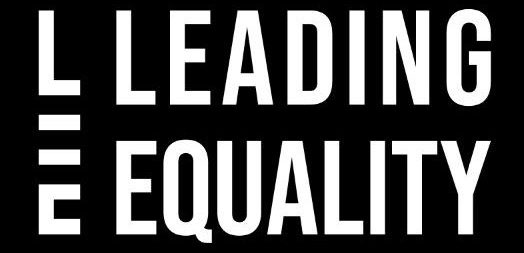Institutionalised racism in education throughout the generations: A personal account

First Generation Black British (1960s – 1970s)
The British Educational System has had a legacy of systematically failing black children (Richardson, 2007; Gillborn, 2008). This is my personal account of how institutionalised racism has impacted my family throughout the generations.
My Grandparents arrived in the UK in the 1950s, where they were welcomed with racism, rejection, and persecution was the narrative presented to Colonial migrants as discussed by (Eddo-Lodge, 2017:25). Subsequently, Colonial Migrants were ignored and excluded from parts of society, this was a strategy used to preserve White British purity (Myers, 2015:17 as during that time it was of national interest to preserve the’ British race’ due to the ‘dwindling birth-rate’ post Second World War (Paul, 1997:2).
My father is a first-generation, Black British Caribbean. He attended school during the late ’60s early ’70s. During this era, it was commonplace that those who were from African Caribbean descent were systematically discriminated against and failed by the British Educational system (Richardson, 2007:68; Gillborn, 2008:73). Many children of African Caribbean heritage were labeled ‘educationally subnormal’, hence excluded from mainstream schools (Richardson, 2007:68).
My grandmother was the head cook at the primary school where my father attended. On one occasion she walked passed a classroom where the teacher was reading the book ‘10 Little Ni**er Boys’ to a group of predominantly Black Caribbean students. My grandmother campaigned and was successful in the removal of these books, not only from that school but all schools and from Manchester City Library.

The racist novel by Agatha Christie. Later changed the title to ‘then there were none’
Second Generation Black British (1990s – 2000s)
Being Black and British, I have had a first-hand account of attending a traditionally white, mono-ethnic inner-city secondary school as a pupil during the multiculturalism era of New Labour and Blair’s government. During this time, there was an absence of understanding of racism and race equality in policy literature, as discussed by Gillborn (2008). Multicultural integration during 1996 – 2001 was a low priority within the school, despite the Black and Asian cohort increasing every year.

Lostock Community High School (2001)
I attended Lostock Community High School which was known as a ‘dumping school’, where pupils excluded from neighbouring school would be taken on the school roll. The exclusion figures at that time were significantly higher than the national average with Black children being punished twice as much as their white counterparts; with the Black Caribbean group being the most punished (Williams 2004). This contributed towards a toxic racialized environment where pupils did not integrate, misconceptions about various cultures were not challenged and pupils from Black Global Majority (BGM) backgrounds were marginalised. This led to racial tension between the host community and Black students with little to no intervention from the school and no polices designed to safeguard BGM students. The governors made the decision to keep these figures confidential. Ultimately, this led to the suspension of head Teacher in 2004 along with the Governing body for 15 years of neglect by educational bosses (Manchester Evening News, 2007).
I was fortunate to attend a Pan African Saturday school, to unpick the trauma experienced through mainstream education. Here, I was taught by qualified Black teachers that volunteered their time on a Saturday morning. This was integral to reinforce positive self-image, self-confidence and to help bridge the attainment gap that was absent in my formal schooling This taught me from an early age that it is essential to have positive Black representation in schools, alongside a curriculum that reflects global society and to relate to the increasing global audience.
Third generation Black British (2019 – )
My eldest daughter attends a church school, renowned for its outstanding attainment results. The school is known for its ‘Christian ethos – one which has at its heart the individual made in the image of God. As such all are valued equally’. Subsequently, the school adopted a colour-blind approach that underplays the significance of institutionalised racism within its curriculum, leadership, and Management. Since the death of George Floyd (RIP), I have consulted with the school, challenging the lack of cultural inclusion and Black representation in the curriculum. As a direct response, the school has decided to source more Black books by Black authors and will be discussing how to implement inclusive strategies with the senior leadership team.
Breaking the Cycle
We all have a role to play in breaking the cycle of institutionalised racism in education and to adopt an anti-racist, cultural approach to the curriculum. It is essential to have a whole-school approach to have a significant impact on changing the discourse within schools and a range of other professional practices. (Paul, 1997: 190). This will create equal opportunities for the generation of young learners going through the English educational system. This will contribute towards leading educational change and breaking the traditional cycle of a colour-blind outlook through multi-cultural representation.
If you are familiar with this blog, I have been campaigning and spreading awareness towards the decolonisation of the curriculum since I started teaching. I have been in a unique position to lead educational change within my educational setting.
We aim to introduce an Anti-Racist, culturally inclusive diet that integrates multiple perspectives, to topics within the National Curriculum to make it more inclusive for BGM learners and to ensure that whiteness is not the norm by which everything is measured, driving the narrative of decolonising the structures in education, focusing on Curriculum Reviews and Adaptation, Staff Training and CPD, Student Education and Leadership and Management.

Anti-racist structure review model
Throughout this journey, it has reinforced the importance of integrity and the pursuit of social justice as well as equality and diversity within education despite institutional racism and neoliberal constraints.
As a proud Black teacher, researcher and father, I believe that an Anti-racist cultural approach in our schools will eventually lead educational change within society and foster a mindset of equality, and respect of cultural differences and similarities, creating a new generation of Black and Global Majority leaders.
Bibliography
Eddo- Lodge, Reni (2017). Why I’m no longer talking to white people about race. London: Bloomsbury. 1 – 124
Gillborn, D. (2008) Racism and Education. London: Routledge.
Manchester Evening News. (2007). sacked school governor im a scapegoat. Available: https://www.manchestereveningnews.co.uk/news/greater-manchester-news/sacked-school-governor-im-a-scapegoat-1186050. Last accessed 9th Apr 2020.
Myers, K. (2016). Struggles for a past: Irish and Afro-Caribbean histories in England, 1951-2000. Manchester University Press.
Richardson, B. ed. (2007). Tell it like it is: How our schools fail Black children. Bookmarks.
Paul, K. (1997). Whitewashing Britain: race and citizenship in the postwar era. Cornell University Press.
Williams, J., 2004. Tilting at Windmills…: Memoirs of a School Governor; a Cautionary Tale of Corporate Bullying.
